Cart
Cart is empty
Looks like you haven't made your choice yet
Looks like you haven't made your choice yet
From now, we'll keep you updated on our latest news
The project "I practice" aims at bringing us back to the traditional idea of yoga practice, which was, for centuries, a personal practice and not a group activity. The student first learned with a Master, then he withdrew in his cave to dive into his own experience.
The message of this project is that an individual practice is essential to evolve on the yoga path and to discover the priceless moment of inner peace. Of course, this does not mean that the collective practice is not necessary.
The best masters classes can't replace the experience of a personal practice done in complete awareness. Therefore, "I practice" is a tool that provides guidance, in order to draw the best benefits of holistic yoga, while allowing flexibility on the timing of your own practice.
Without keeping your attention on the outside (which is often the case with video courses), "I practice" offers you a toolkit, which can be personalized and transformed into follow-up through personal consultations or yoga trainings with Saji and/ or Maitri (the authors of the project).
There are no any description of asanas on the back part of the cards. "I practice" is mostly a tool to for sequencing (rather then a manual to teach alignments) because Saji and Maitri traditionally consider that all the practices are supposed to be taught personally or at least in a collectif class where the teacher can explain and adjust the student.
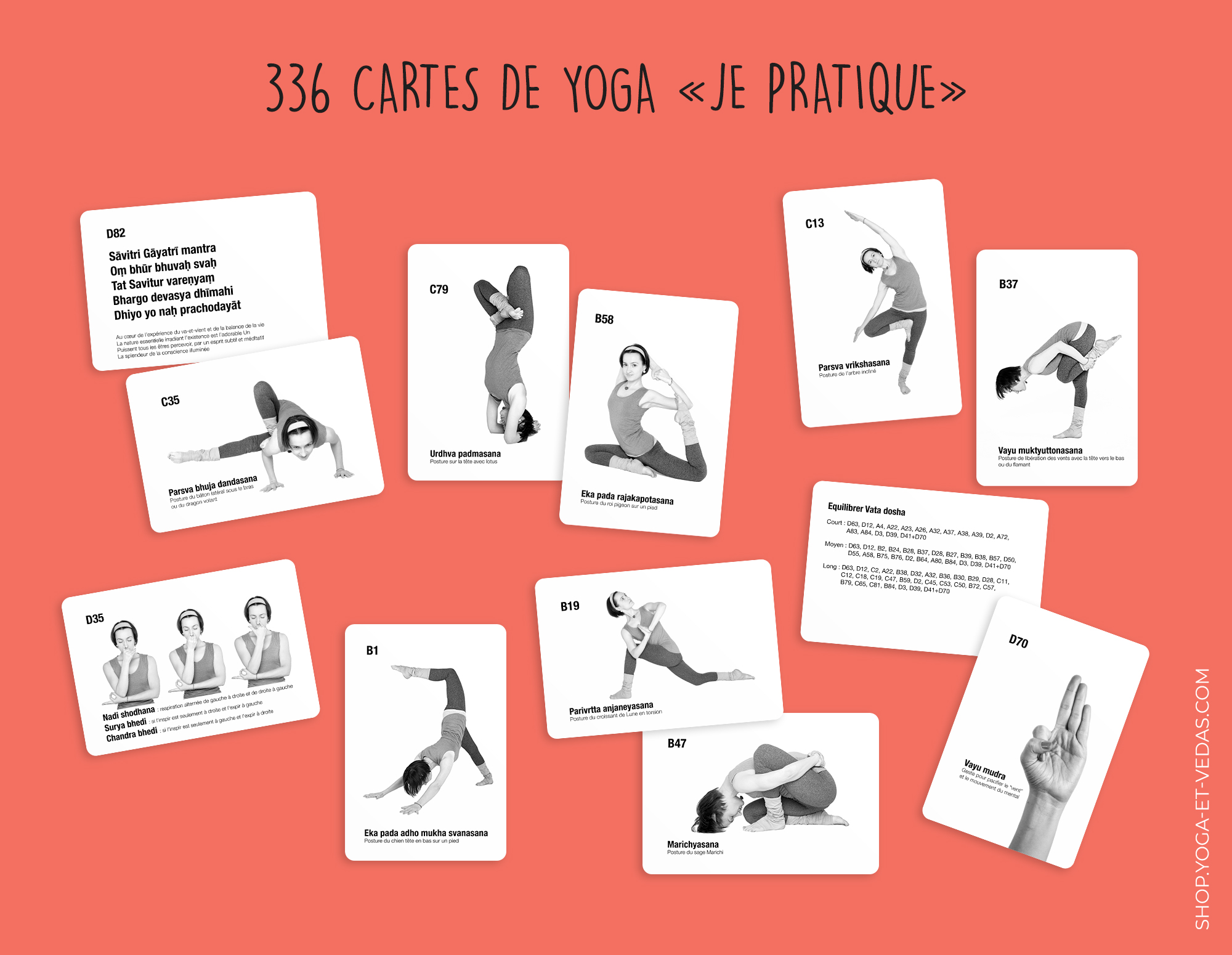
The 336 “I practice” yoga cards are divided into 4 categories in a colorful cardboard box with compartments. The cards, bringing together all aspects of yogic practice and offering an infinitely customizable sequencing tool. The different thematic sequences noted on the 30 additional cards offer a wide variety of sequences and sessions of varying duration and complexity, whether on general themes or yogatherapy.
This category contains main postures, such as Ado mukha svanasana (downward-facing dog pose), Ashwa sanchalanasana (Equestrian), Virabhadrasana (Warrior), Uttanasana (Standing Forward Bend), Vrikshasana (Tree), Gomukhasana (Cow face), Bhujangasana (Cobra), Dhanurasana (Bow), Sarvangasana (Shoulderstand).
See all 84 cards A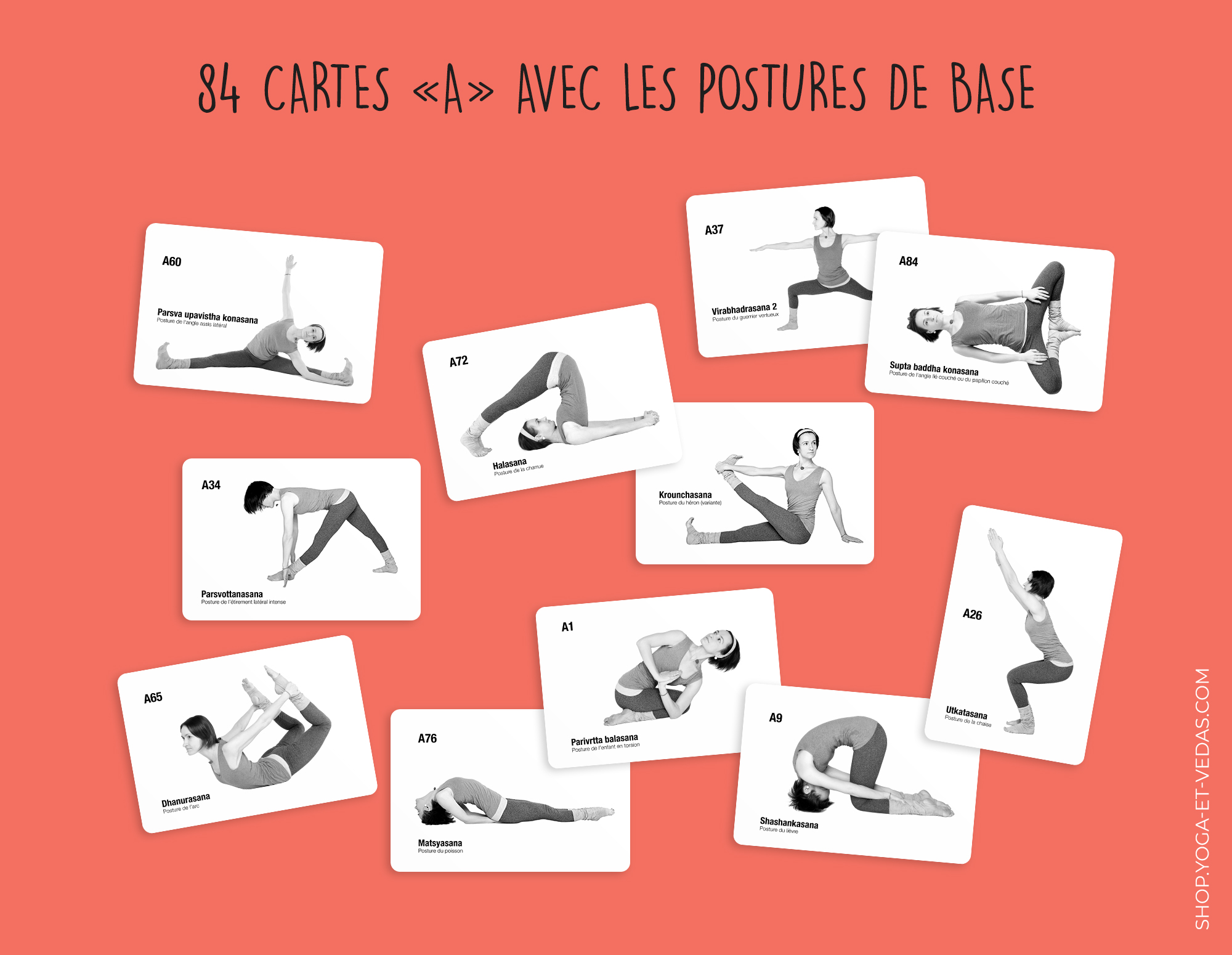
This bag contains intermediate asanas and interesting variations for exemple Chaturanga dandasana (Four-Limbed Staff), Vasisthasana (Side Plank), Garudasana (Eagle), Natarajasana (Lord of the dance), Navasana (Boat), Tolasana (Balance), Salabhasana (Locust), Bakasana (Crane), Chakrsana (Wheel).
See all 84 cards B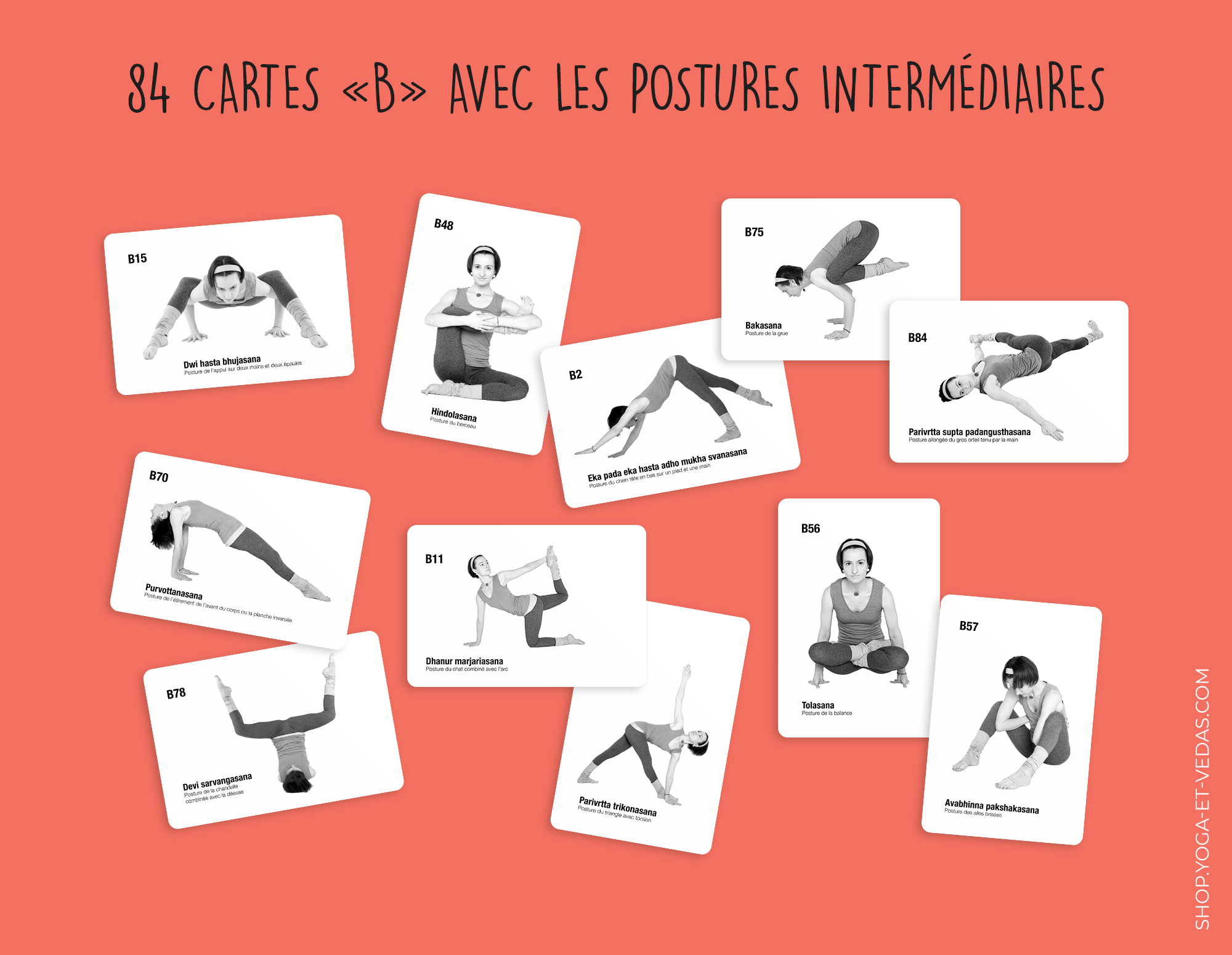
This category contains advanced postures, like Titibhasana (Firefly), Vatayanasana (Horse), Astavakrasana (Eight angle), Mayurasana (Peacock), Hanumanasana (Monkey), Padma matsyasana (Fish in lotus), Sirsasana (Headstand), Vrischikasana (Scorpion).
See all 84 cards C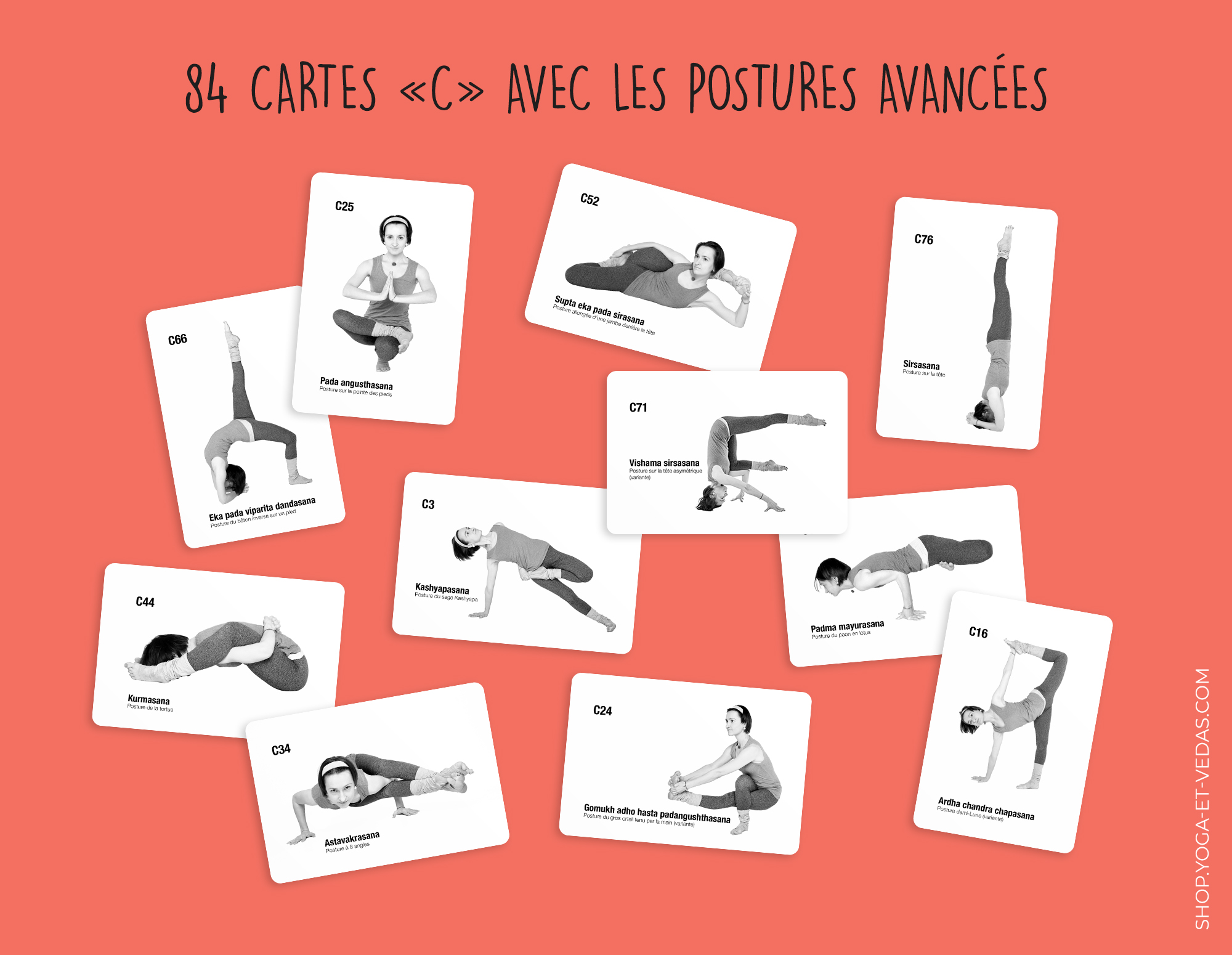
This category contains everything else rather then asanas, different elements which add to the yoga practice it's holistic aspect :
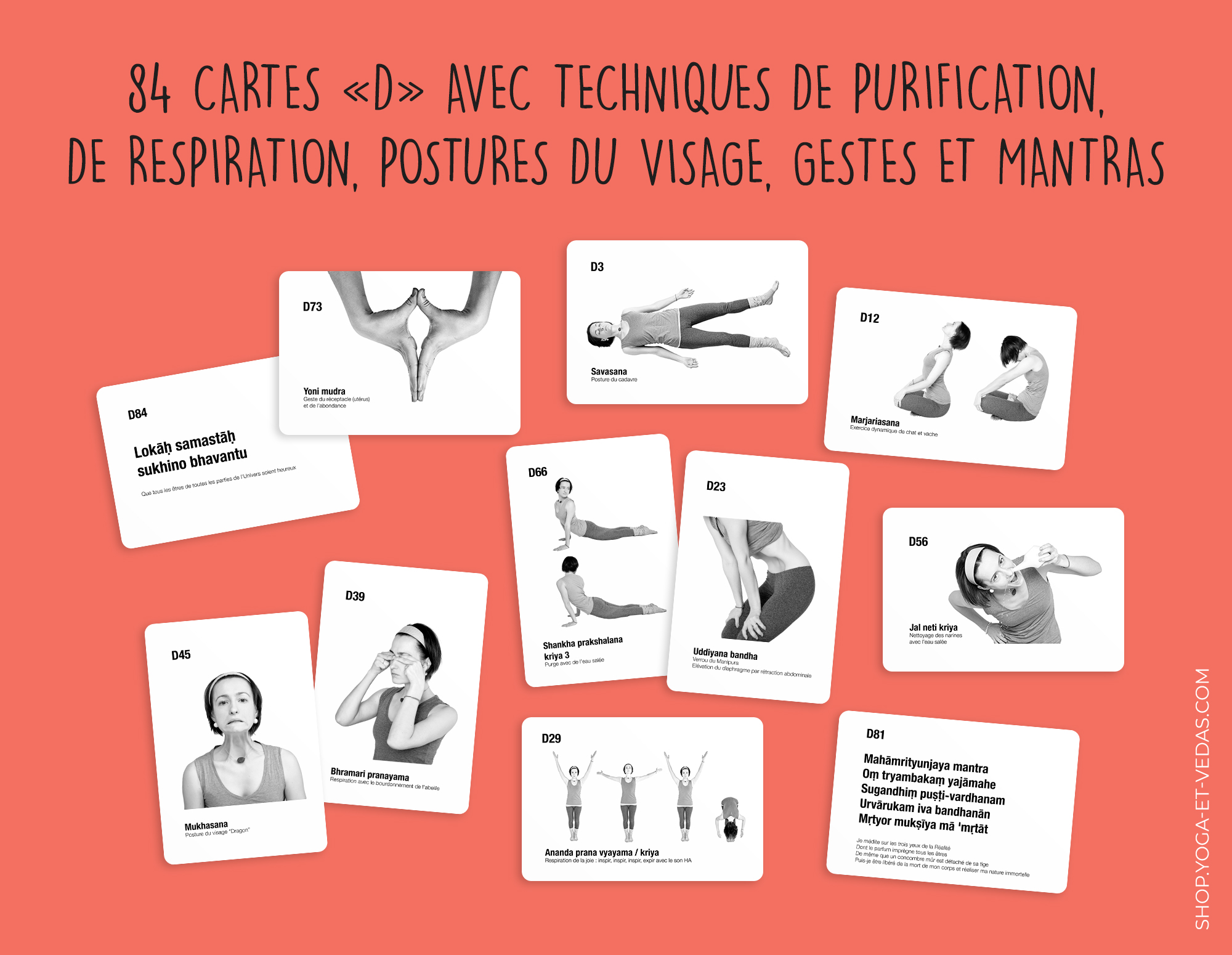
Sequences are organized by or general theme (heart opening, hip opening, chakras and 5 elements), by ayurvedic principles (balance of doshas and vayus), by therapeutic sequences (back pain, stress, asthma, diabetes, blood circulation, high blood pressure, PMS syndrome). They are numbered.
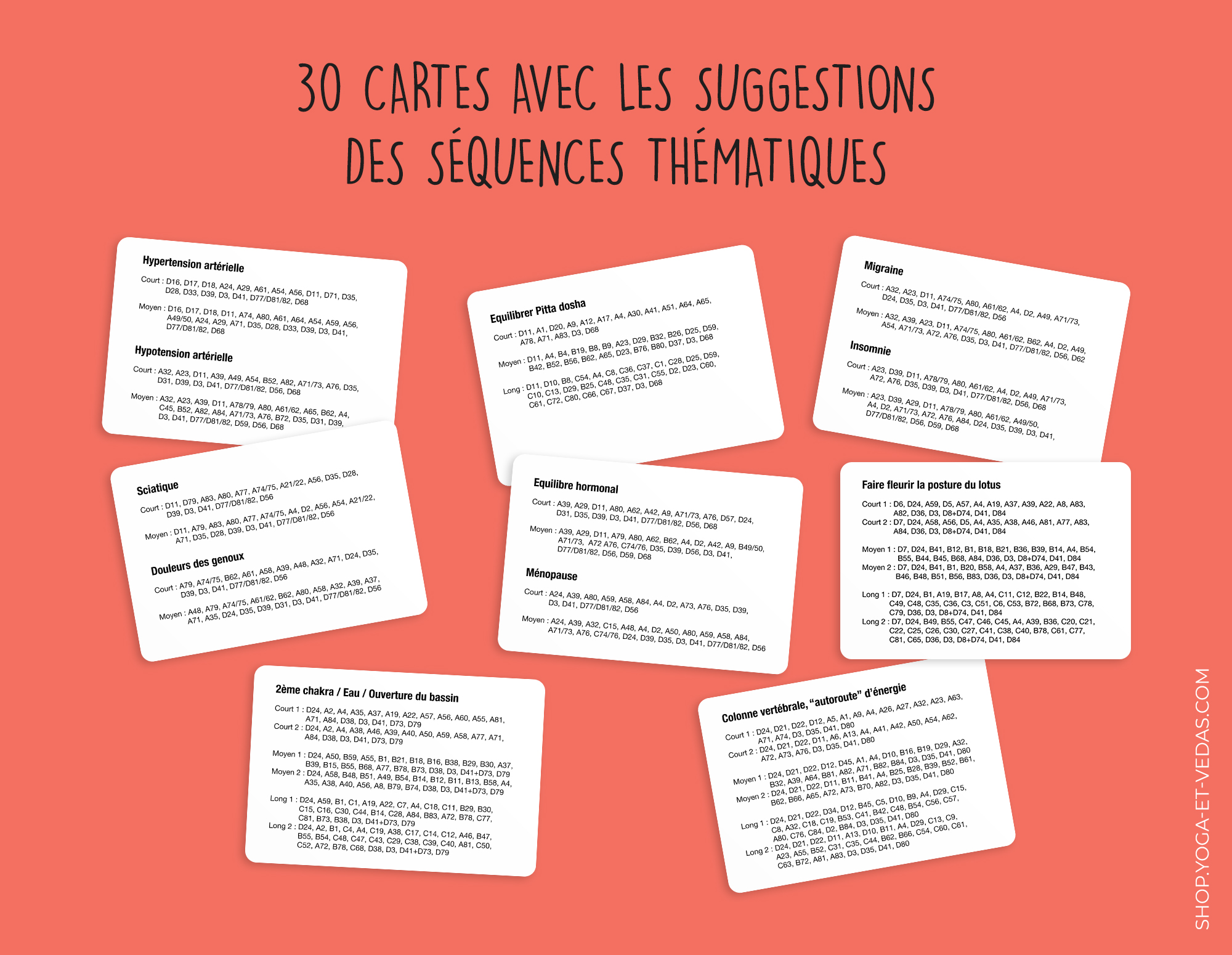
Yogatherapy sequences offer a vector of the practice to alleviate pain or to anticipate a problem. These sequences are designed to be short, because such therapy requires a daily practice. In order for this practice to be more efficient, it is advisable to consult a Yoga therapist.
Through all the techniques and methods Yoga is offering, we are building up a lot of energy. It is important to direct this energy and to have a precise intention in each practice. This allows also a better concentration in static postures where the mind has a tendency to wander.
It’s the intention of the practice (its theme) which will determine the choice of the postures and other practices which conduct to a specific result. This intention can concern our physical body, our emotions, our energy or our spiritual path and the will to connect to the Source of the Universe.
In order to have a holistic practice, you can use additional elements (especially those from section D), besides the postures.
Singing the Om mantra (1 to 3 times) in the beginning and at the end of the practice, will always give a spiritual dimension to our practice. Always make room for conscious breathing, for relaxation in Savasana, for concentration (dharana) and meditation (dhyana) in your practice.
Regardless of the duration and theme of your practice, always include at least the following postures:
In order to bring a physiological and energetic change through the practice, it’s necessary to stay in a static posture for at least 10 breaths. The time to sit in a posture can go up to 10 minutes (depending on your intention and your physical ease). You can use several methods to build up your sequence.
You can refer to different poses of the body that echoes different stages of life:
Do not hesitate to add warm-up exercises at the beginning of your practice if needed. Do the postures on both the left and the right side of your body, even though on the cards you only see one side.
Réalisez les postures bilatérales toujours d’un coté et ensuite de l’autre, même si sur les images la séquence enchaîne avec des cotés différents.